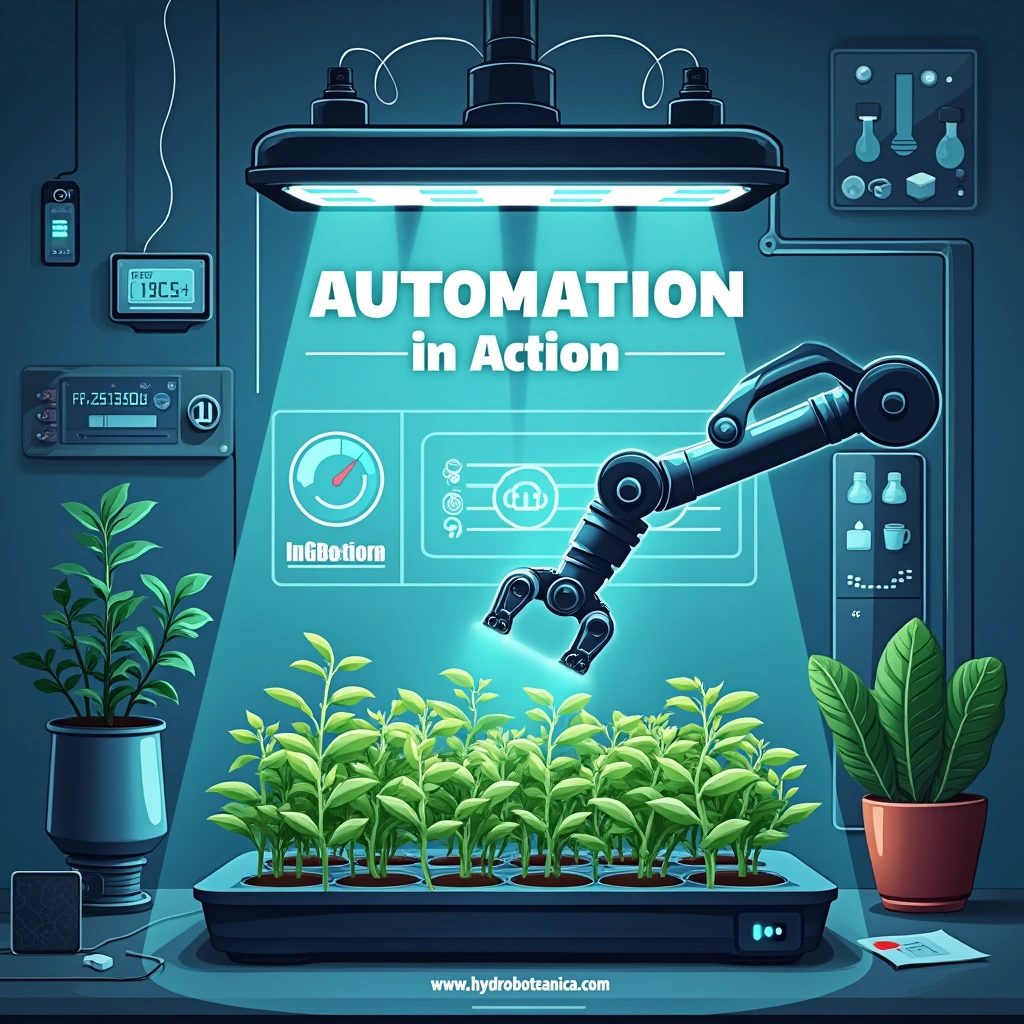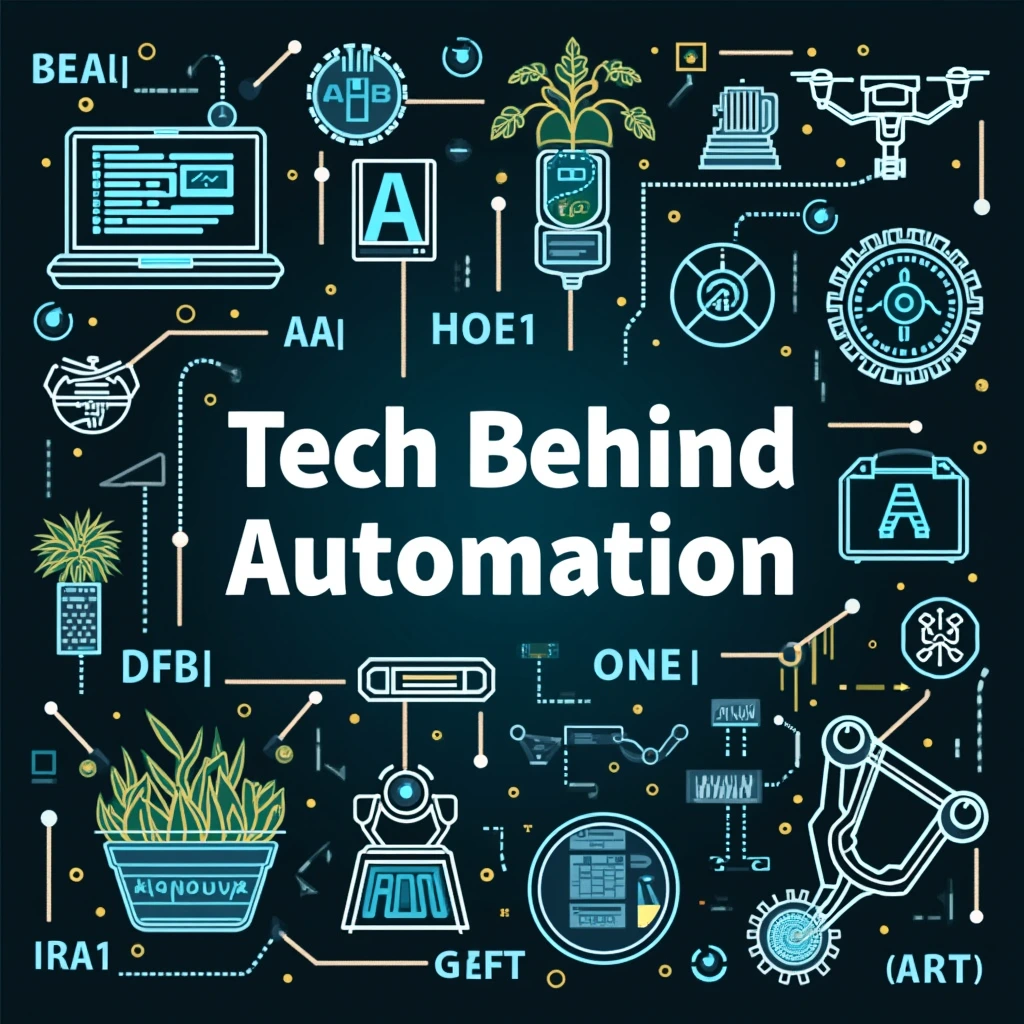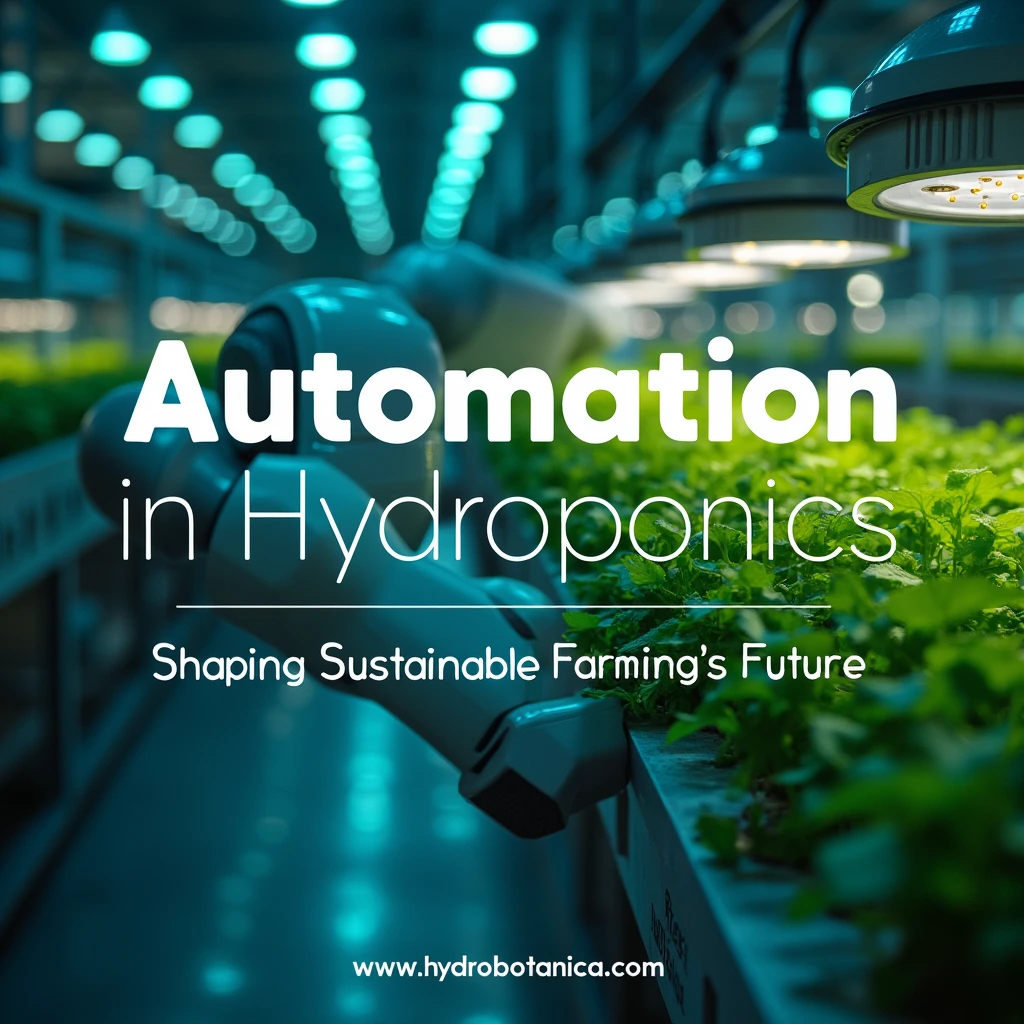Overview of Hydroponics
Hydroponics, the practice of growing plants without soil, has emerged as a cornerstone of modern agriculture. By delivering nutrients directly to plant roots through water-based solutions, hydroponics offers higher yields, faster growth cycles, and resource efficiency compared to traditional farming . Its ability to thrive in urban settings, deserts, and regions with poor soil quality positions it as a critical solution to global food security challenges .
Importance of Automation
Automation elevates hydroponics from a niche technique to a scalable, sustainable farming method. By integrating technologies like IoT, AI, and robotics, automated systems minimize human error, optimize resource use, and enable 24/7 monitoring—transforming hydroponics into a precision-driven industry .
Understanding Hydroponic Systems
Types of Hydroponic Systems

- Nutrient Film Technique (NFT): Plants grow in shallow channels where a thin film of nutrient-rich water flows continuously . Ideal for leafy greens like lettuce.
- Deep Water Culture (DWC): Roots are suspended in oxygenated water, making it simple and effective for herbs and small plants .
- Aeroponics: Roots are misted with nutrients in air, maximizing oxygen exposure and growth speed .
- Drip Systems: Nutrient solutions drip directly onto roots, offering flexibility for larger crops like tomatoes .
Components of Hydroponic Systems
- Nutrient Solutions: Tailored mixes of macro- and micronutrients, adjusted for pH (5.5–6.5) and electrical conductivity .
- Grow Mediums: Inert substrates like rockwool or perlite support root systems without altering nutrient balance.
- Environmental Controls: Sensors for temperature (18–25°C), humidity (40–60%), and CO2 (1000–1500 ppm) ensure optimal conditions .
The Role of Automation in Hydroponics

Automated Irrigation Systems
Smart irrigation systems use soil moisture sensors and timers to deliver water precisely, reducing waste by up to 90% compared to traditional methods . For example, IoT-enabled pumps adjust flow rates based on real-time plant needs .
Nutrient Delivery Automation
Automated dosing systems monitor pH and nutrient levels, injecting corrections via solenoid valves. Fuzzy logic controllers, as tested in chrysanthemum cultivation, maintain pH within 0.3% error margins .
Climate Control Automation
Closed-loop systems regulate temperature and humidity using HVAC integration. In one case study, ARM Cortex-M4 microcontrollers achieved <5% error in environmental parameter adjustments .
Lighting Management
Smart LED systems adjust spectra and intensity to mimic natural sunlight. For instance, 17 hours of daily light exposure at 105 μmol/m²/s optimizes photosynthesis in leafy greens .
Technologies Driving Automation

Internet of Things (IoT) Integration
IoT devices enable real-time monitoring of parameters like pH, EC, and water levels via mobile apps. For example, NodeMCU microcontrollers transmit data to cloud platforms, allowing remote control .
Artificial Intelligence (AI) and Machine Learning
AI algorithms predict plant stress and optimize growth conditions. A spinach farm using ANN models achieved 20% higher yields by adjusting nutrient schedules dynamically .
Robotics in Hydroponics
Robotic arms automate planting and harvesting, while autonomous drones inspect crop health. Vertical farming robots, such as those in Singapore’s Sky Greens, stack and rotate trays for uniform light exposure .
Benefits of Automation in Hydroponics

- Increased Efficiency: Automation reduces labor costs by 70% and enables year-round production .
- Enhanced Precision: Sensors maintain nutrient concentrations within ±3%, minimizing waste .
- Sustainability: Systems use 90% less water and 50% less fertilizer than soil farming .
- Scalability: Modular designs allow farms to expand vertically, tripling output per square meter .
Challenges and Considerations

- Initial Investment: Setup costs for sensors, controllers, and LEDs range from 5,000–5,000–50,000 .
- Technical Expertise: Operators need training in IoT and data analytics 16.
- System Reliability: Power outages or sensor failures can disrupt growth cycles; backup systems are essential .
Case Studies

- Smart Hydroponic Spinach Farm: An AI-driven system using artificial neural networks (ANN) boosted spinach yields by 25% while cutting water use by 30% .
- IoT-Based Urban Farm in Mumbai: NodeMCU microcontrollers and Blynk apps enabled real-time monitoring, reducing pest outbreaks by 40% .
8. Future Trends in Hydroponic Automation
- AI-Powered Predictive Analytics: Algorithms will forecast disease outbreaks weeks in advance .
- Solar Integration: Solar-smart systems, like those tested in India, cut energy costs by 60% .
- Market Growth: The global hydroponics market is projected to reach $18 billion by 2028, driven by urban farming demand .
Conclusion
Automation is reshaping hydroponics into a high-tech, sustainable solution for global food crises. By merging IoT, AI, and robotics, farmers can achieve unprecedented efficiency and scalability. As technologies advance, hydroponics will play a pivotal role in feeding a growing population while conserving resources.





